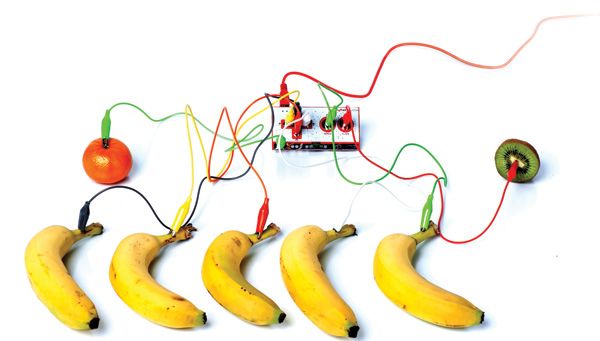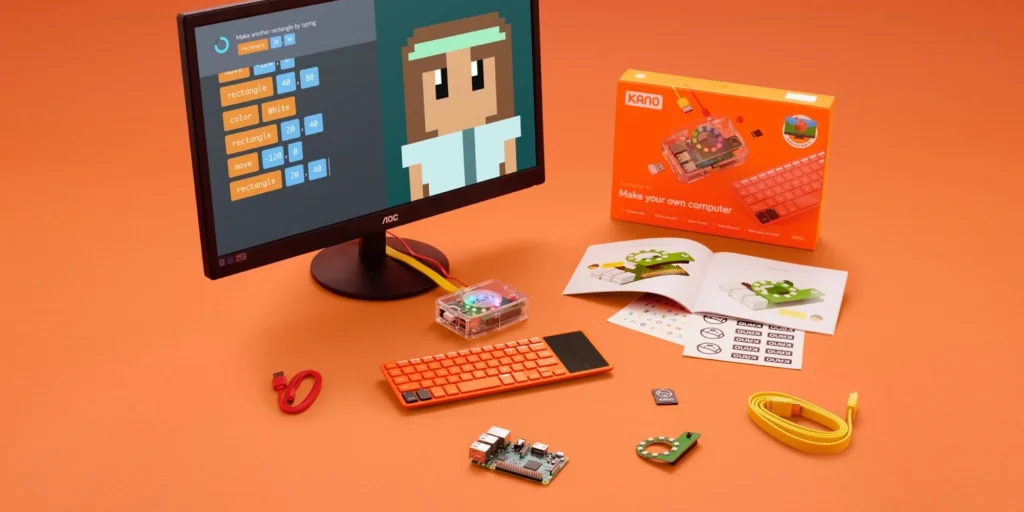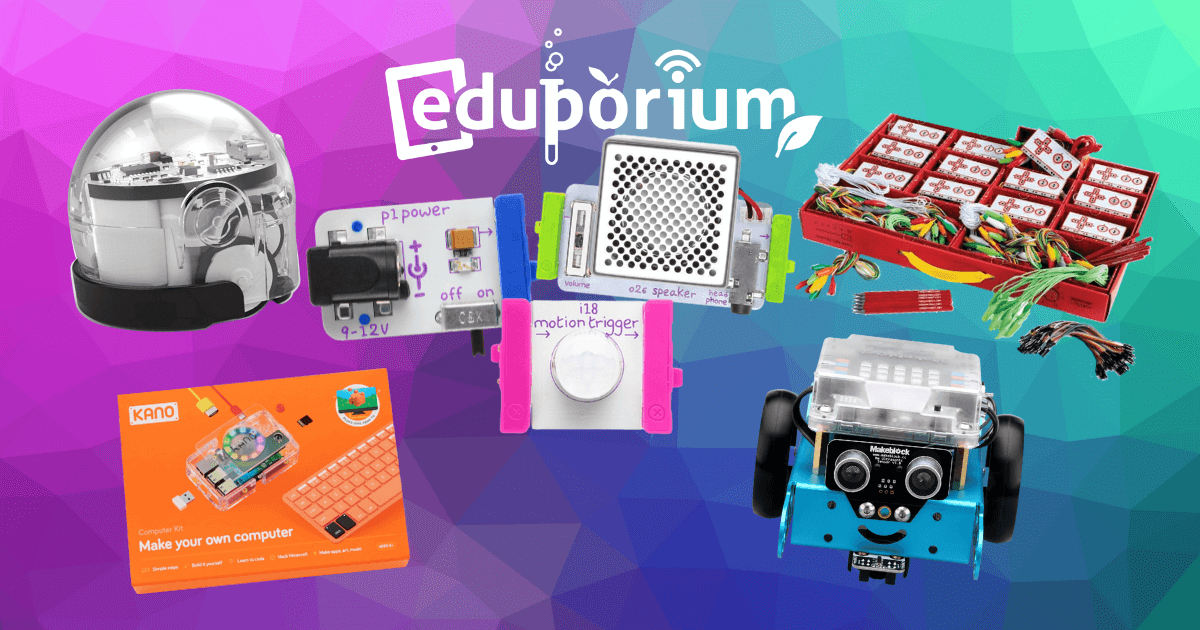Hands-on learning has taken the entire education community by storm. In almost every town and in almost every grade, educators are ditching the lectures, ditching the desks and embarking on a brand new kind of more meaningful educational experience. And, you know why? Because it works! Explore the best EdTech tools for creating hands-on STEM and how to use them to shape future readiness every day!
Introducing Young Kids to Coding with the Ozobot
The Ozobot is a tiny optical robot—no bigger than a ping pong ball—that children can program and control using an innovative and age-appropriate form of coding. As an optical creature, the Ozobot's can respond to stimuli in the form of colors and also reacts to commands programmed by students in the form of color-coded blocks. Beneficial for kids as young as five, the Ozobot seamlessly merges playful design with core scientific concepts to foster this innovative, game-based solution for introducing our youngest learners to the power of code. With this importance of coding in this day and age, the creators of the Ozobot went a step further and created the perfect product for weaving it into classrooms as early as possible.
The Ozobot Robot will come pre-programmed with the ability to respond to many different color codes as well as a grid that illustrates the actions it can perform, and how to make it execute those actions. Kids are encouraged to invent and participate in interactive lessons by creating courses on which their Ozobots can roam. Every time the Ozobot’s microscopic sensors detect a color on the course—either red, black, blue or green—its light will change color to reflect that discovery, supplying children with immediate feedback they could really use. This simple system goes a long way to eliminating fears kids have had about tackling the complexity of the subject. By illustrating coding in its simplest form, the Ozobot helps build familiarity and skills for thriving in a tech-first world.
Besides immersing kids in fun coding, the Ozobot embodies versatility when also helping them learn about robots and their capabilities. Robotics is emerging as an extremely popular way for instructors to introduce STEAM learning with the conception of afterschool and in-school robotics clubs and classes consistently increasing. The Ozobot, as we already mentioned, can be a powerful STEM tool to engage young learners, but it also has a firm place in elementary, middle, and the high school grades as well. Its capabilities allow it to enhance activities at all grades with anything from simple color coding to complex text programming. There’s a reason why the Ozobot always draws a crowd.

Make Making Meaningful with the Makey Makey
If you’ve ever seen a bunch of bananas and some wires, chances are you’ve already stumbled across the Makey Makey. Its popularity continues to grow despite it being one of the earlier STEM tools to shape this generation of innovation. The Makey Makey is a tiny computer interface that uses the natural conductivity from people and objects to make interactive touchpads out of almost anything. Its USB cable allows it to easily plug in to a computer or laptop and simple alligator clips help make connecting objects a snap for kids as young as five years old!
Using the Makey Makey and Web-based programs, kids can create anything from interactive piggy banks to pianos made of fruit. Anything that’s conductive—even water—will work to complete the circuit as kids immediately see which things have conductivity and which ones don't. The Makey Makey board contains inputs for those four directional keys on the keyboard, the space bar, and mouse. These ports correspond with keyboard keys, so when kids press the object associated with the key, it performs that function. One of those top programs to use with the Makey Makey is Scratch—a Web-based intro to hands-on learning. Using Scratch, children could create and mix coding-style programs and immerse themselves deeper into the learning with the Makey Makey.
The Makey Makey is amazing in quick, in-class projects or for extended makerspace activities. Its essence lies in its name; the Makey Makey allows kids to make any object a key. This, of course, means your Makey Makey helps transform objects into functioning interfaces that carry out specific actions when stimulated. It helps kids understand concepts of electricity and conductivity and nurture problem-solving and exploration skills while also building creativity. Since it only requires a tiny bit of conductivity to work, the Makey Makey is one of the best STEM tools to inspire students as early as first grade.
littleBits Help Make Anyone an Engineer
An average person, even young kids, reportedly spends up to 11 hours each day near or using electronics. During this time, they, most likely, are only consuming the product, but littleBits kits offer practical solutions to the issue. Perfect for illustrating some important concepts, these magnetic modules snap to one another to form functional structures. These structures, with the help of student construction, can form devices that blink, buzz, vibrate, and more! This new type of building blocks helps promote the lighter side of hands-on education. Plus, they help kids learn about the makeup of electronics, their functions, and capabilities.
The littleBits modules are powered by electronics and they thrive off of the magnetic attraction they share. Packed inside these bite-sized modules lies enough power to truly transform STEM education. Each block has its own specific function—input, output, power, or action—and they're coded to indicate the functions. Their simplicity and structural makeup truly help make engineering possible for anyone, including students, regardless of their prior experience. What is really great about littleBits is the progressive approach the kits offer. The Base Kit serves as an introduction to modular electronics and, as kids grow, each of the littleBits packs seems to grow with them, adding in new modules that correspond with their abilities until they wind up creating Internet-connected devices and coding with snap-and-go blocks once they reach high school.
The prime goal of using littleBits is to combine education, technology, and innovation into one accessible, progressive, and age-appropriate experience. In STEM classrooms around the world, littleBits has already begun empowering students with potent technology and continues to fuel wide levels of creativity through the emergence of project-based learning using these kits. Today’s children needs inspiration to become a part of the world of innovators and littleBits consistently delivers that spark. Best of all, many projects are available on their website (and ours) with step-by-step instructions to help. Try littleBits soon and witness the overwhelming satisfaction of combining engineering and creativity with such a useful product!

Introducing Coding to Early Learners with the Kano Computer
There are numerous EdTech solutions on the market these days for teaching younger children fundamental principles of coding and design. Not many, however, incorporate coding on a functioning computer that the kids build themselves! The Kano Computer Kit is an all-encompassing learning toolbox that introduces kids to the power of hands-on coding. Plus, they can develop some engineering skills by crafting a computer of their own right out of the box! For parents and educators who want students to learn to code, the Kano's a must-have tool for developing future-ready skills.
The Kano kits come with its own personal microcomputer—the Raspberry Pi—and all the parts kids need (except the monitor) to build their very own computer. Its operating system comes preloaded on a microSD card; all kids need to do is insert it into the Raspberry Pi. When it comes to the Kano, much of the learning comes in the set-up. Children gain a whole lot of knowledge when physically putting the computer together as they get to know the functions of the hardware and parts. The power cord and HDMI cord both connect to the Raspberry Pi. The HDMI, of course, provides a picture on the monitor—you’ll see the Kano's orange logo once it powers on.
After it’s been set up, the Kano’s power really becomes more apparent. Children can not only play a couple of classic games—like Pong and Snake—they can build these games themselves using perfectly illustrated instructions to code in the requirements. It also comes with a full browser and can do just about anything a regular desktop or laptop can do. There are interactive, on-screen tutorials that will immerse children in the learning process, making sure they understand what they’ve done before they’re allowed to move on to the next step. They can even create their own Avatar and use it to explore the different apps the computer has, including Minecraft! It really is an exceptional and innovative tool for teaching STEM concepts and helping prepare kids for the real world.
A Tiny, Mobile Robot for Introducing Engineering
Combining more than one area of STEM education is a goal for teachers and helps intrigue their students. For instance, if there were an EdTech solution that perfectly combined high-tech robotics with a hands-on construction process, that would probably be something to catch the eye of more than a few 21st century educators. But, wait—there is! Fairly new on the EdTech scene, the mBot is an app-controlled, Bluetooth-enabled, build-it-yourself mobile robot that helps teachers to illustrate key robotics and design concepts while seamlessly introducing kids to hardware! Created by robotics experts, the mBot helps kids employ this do-it-yourself attitude while giving life to an educational robot.
We mentioned that the mBot is a robot that kids build themselves. It comes with step-by-step instructions to ensure accuracy in construction. And, one of its centerpieces is the Arduino-like platform that creates all kinds of programming possibilities for kids to explore. This component, especially when combined with the general building process, helps kids start early with exploring the STEM disciplines. Despite the potentially overwhelming 45 pieces in the kit, the mBot can actually be constructed in as little as 15 minutes—leaving plenty of time to experiment and play for the rest of the class! Every piece you need is in the kit, including some high-quality materials to make for an exceptionally personal hands-on experience.
The mBot was designed specifically for amplifying student engagement and enhancing modern-day STEM education. With painless set-up and huge variety of pre-assembled program features, the mBot gets kids programming with hands-on activities. There are even dozens of at-home or in-class learning games kids can explore. It helps educators introduce programming early, illustrating the ease of controlling robots and the power of commands triggering specific functions. Since your robot’s electronic components are based on the Arduino open-source ecosystem, it’s also possible to add additional mechanical parts. With various electronic models to build, kids can customize and learn with their dream robot!
For the latest EdTech, STEM, and 21st century education news, follow us on Twitter and Instagram. Like us on Facebook, too, or sign up for our newsletter for our latest product announcements and offerings. If you have an idea for an Eduporium Weekly theme, send us a message on social media or comment below.



